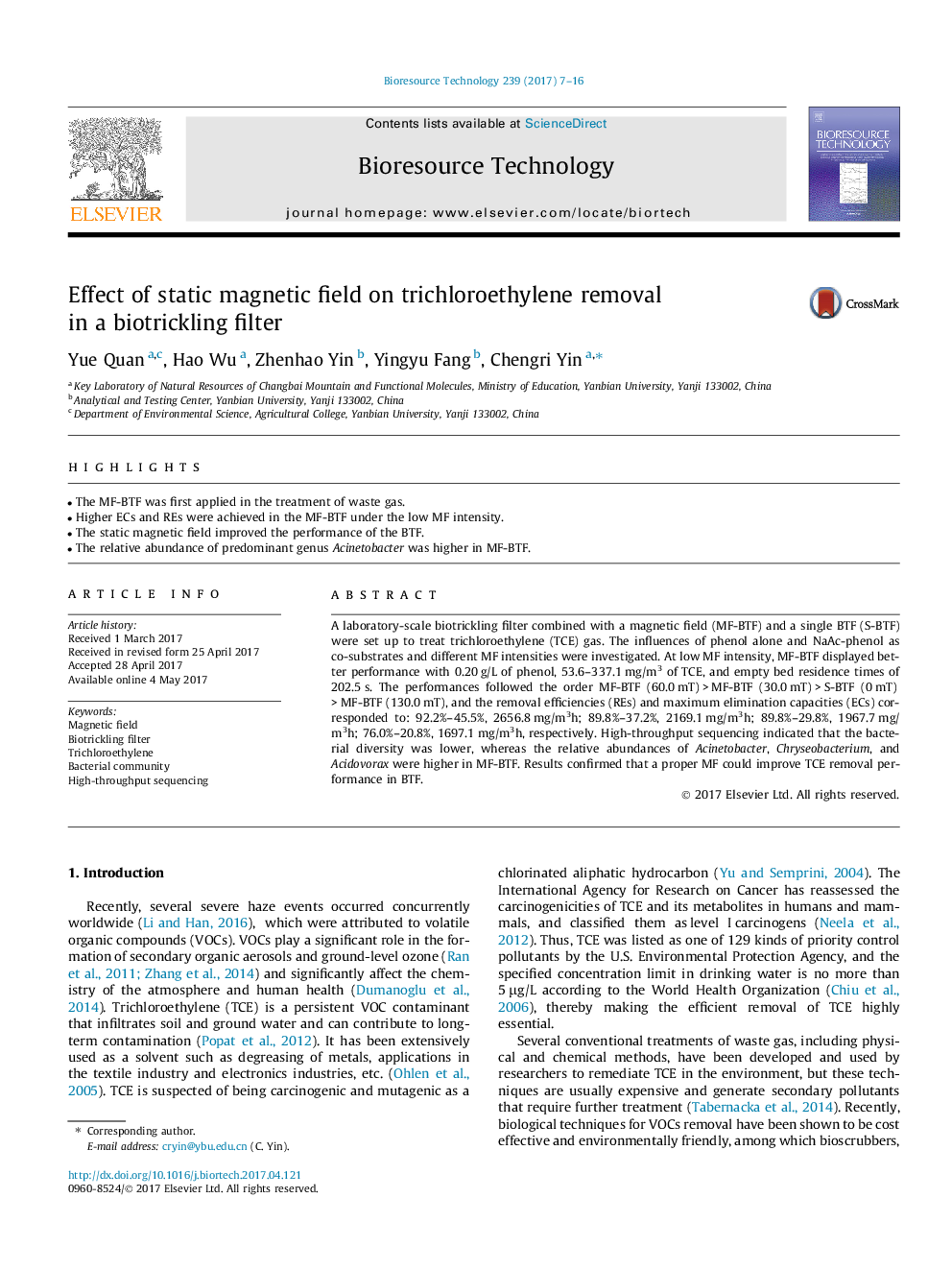| Article ID | Journal | Published Year | Pages | File Type |
|---|---|---|---|---|
| 4997132 | Bioresource Technology | 2017 | 10 Pages |
Abstract
A laboratory-scale biotrickling filter combined with a magnetic field (MF-BTF) and a single BTF (S-BTF) were set up to treat trichloroethylene (TCE) gas. The influences of phenol alone and NaAc-phenol as co-substrates and different MF intensities were investigated. At low MF intensity, MF-BTF displayed better performance with 0.20Â g/L of phenol, 53.6-337.1Â mg/m3 of TCE, and empty bed residence times of 202.5Â s. The performances followed the order MF-BTF (60.0Â mT)Â >Â MF-BTF (30.0Â mT)Â >Â S-BTF (0Â mT)Â >Â MF-BTF (130.0Â mT), and the removal efficiencies (REs) and maximum elimination capacities (ECs) corresponded to: 92.2%-45.5%, 2656.8Â mg/m3h; 89.8%-37.2%, 2169.1Â mg/m3h; 89.8%-29.8%, 1967.7Â mg/m3h; 76.0%-20.8%, 1697.1Â mg/m3h, respectively. High-throughput sequencing indicated that the bacterial diversity was lower, whereas the relative abundances of Acinetobacter, Chryseobacterium, and Acidovorax were higher in MF-BTF. Results confirmed that a proper MF could improve TCE removal performance in BTF.
Keywords
Related Topics
Physical Sciences and Engineering
Chemical Engineering
Process Chemistry and Technology
Authors
Yue Quan, Hao Wu, Zhenhao Yin, Yingyu Fang, Chengri Yin,
